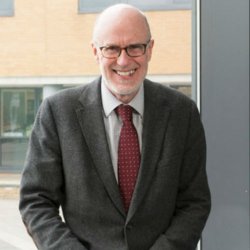Investigation of quantum coherent transport and EM field sensitivity of ion channel transport of neuronal cells
This project will investigate whether quantum mechanics is involved in the brain.
Start date
1 October 2019Duration
3 yearsApplication deadline
Funding source
The John Jacob Astor Charitable TrustFunding information
All University fees are cover for the duration of the project with a stipend of approx. £15K per annum for eligible students.
Supervised by
About
Nerve ion channels play a crucial role in brain function as nerve firing is triggering by the opening and closing of ion channels that allow a current of molecular ions to flow in and out of neurons, triggering the action potential travels along nerves. Many brain disorders, such as Parkinson’s and epilepsy are associated with abnormal nerve firings patterns and particularly the synchrony of nerve firing1. Ion channels are made up of proteins in the membrane of cells that can cooperate for the onset and propagation of electrical signals across membranes by providing highly selective conduction of charges bound to ions through a channel like structure. In fact, each ion channel is specialized for specific ions, e.g. potassium channels only permit potassium ions to pass the membrane while they reject other ions (e.g. sodium) to pass. This property is called selectivity and the important part of the ion channel that is responsible for selectivity is called the selectivity filter. Numerous investigations of ion selectivity have been conducted over more than 50 years, yet the mechanisms whereby the channels select certain ions and reject others are not well understood. It has been hypothesized that quantum coherence and quantum interference effects play a key role in both selectivity and speed of transport through ion channels in nerve membranes2. The hypothesis, if true, might help to account for the recent finding that weak electromagnetic (EM) fields, of the strength and structure of endogenous EM fields in the brain, influence the pattern of neuron firing and particularly neuronal synchrony3-5.
The aim of this project is to test the hypothesis that quantum coherence plays a role in neuronal ion transport. We will test the hypothesis by measuring currents through ion channels with and without external EM fields and using both normal and heavy isotopes of ions, such as K+, in order to perturb coherences. We will compare the results to predictions made through quantum mechanical simulations of ion channel conductivity in order to test the hypothesis that quantum coherence is involved in ion channel conductivity and selectivity.
Experimental approaches
We will use standard patch-clamp approaches to measure channel current in neuronal ion channels from inside and outside a single neuron in rat brain slice during intra- and extracellular stimulation. A typical experimental configuration will consist of an extracellular stimulation electrode, an intracellular patching electrode and 6 extracellular recording pipettes monitoring Ve close to the cell body. Electromagnetic fields will be applied through two parallel AgCl that will be arranged such that the slice will be subjected to an approximately uniform EF with field lines perpendicular to the cortical surface. Recordings will be made of ion conductivity with normal and heavy isotopes of K+ and results compared to quantum level simulations and predictions.
Related links
Leverhulme Quantum Biology Training Centre researchReferences
- Hammond C, Bergman H, Brown P. Pathological synchronization in Parkinson's disease: networks, models and treatments. Trends in neurosciences 2007; 30(7): 357-64.
- Salari V, Naeij H, Shafiee A. Quantum interference and selectivity through biological ion channels. Scientific reports 2017; 7: 41625.
- McFadden J. Synchronous firing and its influence on the brain's electromagnetic field: evidence for an electromagnetic theory of consciousness. Journal of Consciousness Studies 2002; 9(4): 23-50.
- Anastassiou CA, Perin R, Markram H, Koch C. Ephaptic coupling of cortical neurons. Nat Neurosci 2011; 14(2): 217-23.
- Frohlich F, McCormick DA. Endogenous electric fields may guide neocortical network activity. Neuron 2010; 67(1): 129-43.
Eligibility criteria
Applicants must have a BSc in a biological discipline. Those who have an A-Level or equivalent in mathematics, physics or engineering will be at an advantage.
A willingness to work across the disciplines is essential.
This studentship is open to overseas students provided they can support the difference between home and overseas fees.
IELTS Academic: 6.5 or above.
How to apply
Please apply online via the Biosciences and Medicine PhD course page.
Biosciences and Medicine PhD
Studentship FAQs
Read our studentship FAQs to find out more about applying and funding.
Application deadline
Contact details

Studentships at Surrey
We have a wide range of studentship opportunities available.



